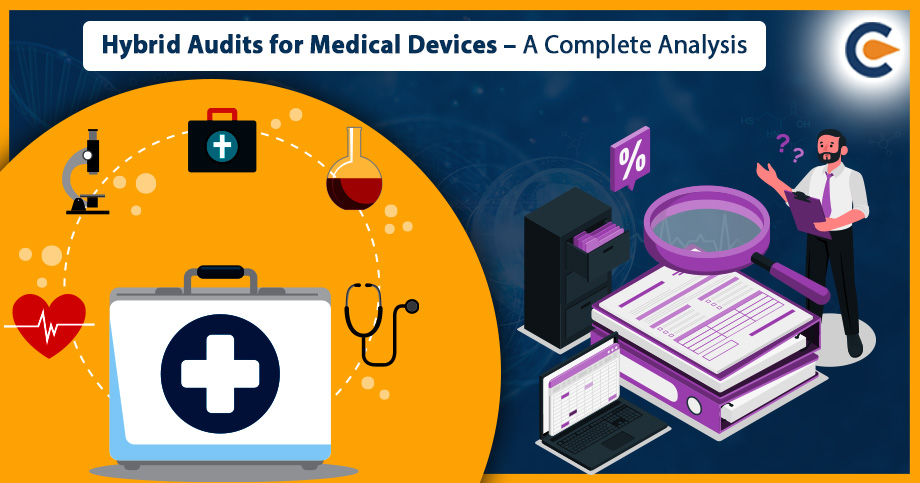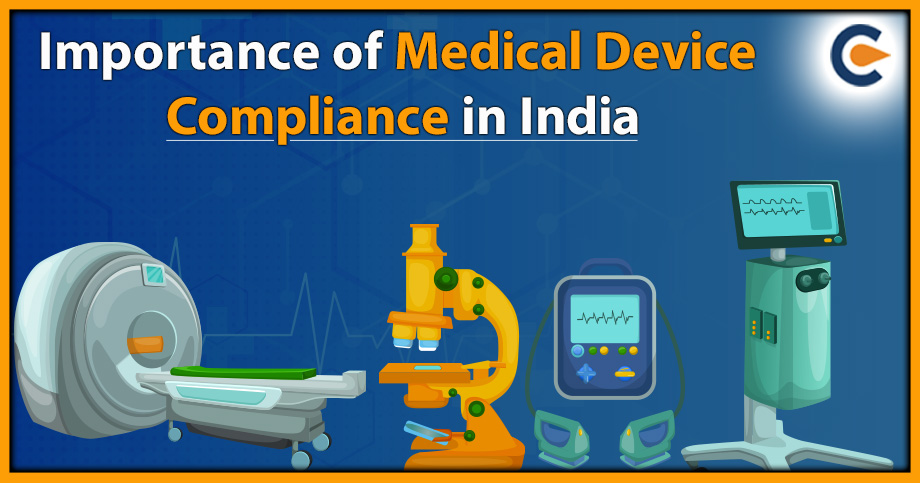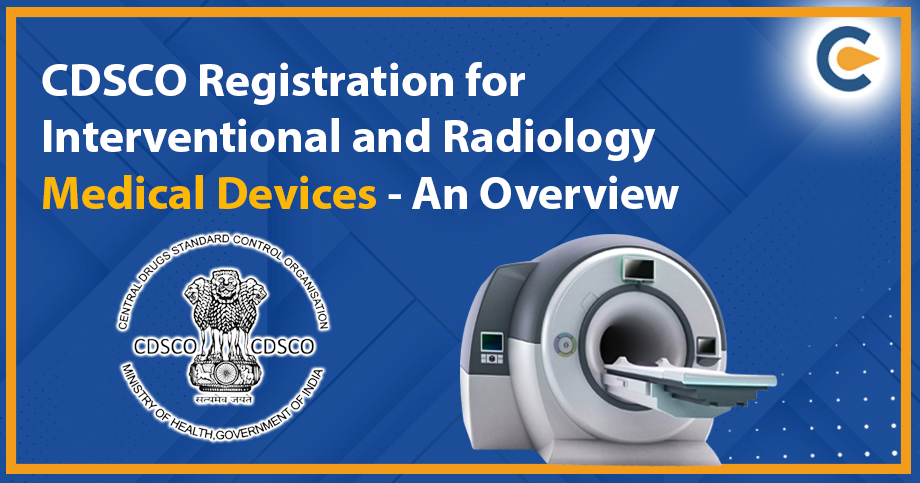The COVID-19 pandemic has compelled the medical device and IVD industry to think of innovative, creative ways to satisfy regulatory requirements without compromising patient safety. The pandemic has managed to spur some beneficial developments despite its devastation. For instance, to conduct remote audits, auditing associations are increasingly using immersive technologies. The application of the new technology has been demonstrated by this experience and has yielded valuable lessons. In this blog, we will discuss more about Hybrid Audit for Medical Devices.
In the first place, hybrid audits and risk analyses have assisted in maintaining audits across multiple shutdown phases, resulting in a continuation of supply for healthcare professionals and eventually patients. Additionally, the vast majority of clients have been successful in keeping up their audit cycle. They understand how important it has been to have procedures and policies in place in order to maintain resilience throughout the pandemic. Technology utilisation has also decreased the likelihood of outbreaks at the client’s location and safeguarded the colleagues during that uncertain period.
What Is An Audit?
A physical inventory check is followed by an auditor’s examination or inspection of various books of accounts to ensure that all departments are using the same documented system of documenting transactions. It’s done to make sure the organization’s financial accounts are accurate.
Internal auditing can be done by staff members or the department head, while external auditing can be done by an outside company or an independent auditor. To guarantee that all books of accounts are completed fairly and there is no misrepresentation or fraud occurring, it is important for an independent authority to check and verify the accounts.
Medical Device Audits
A medical device audit is a methodical, documented procedure that aims to gather data and determine if devices are produced in accordance with GxP and regulatory criteria. Both announced and unannounced procedures may be taken by notified entities and government organizations. As part of your company’s continuous regulatory requirements, they must also be carried out internally.
In other languages, we can say that this is known as a “medical device industry audit,” and it involves the international regulatory bodies evaluating your medical device company to determine whether the goods you produce and distribute comply with legal requirements and good practice guidelines. It can be a source of stress for developers and manufacturers.
Types of Medical Device Audits
It includes:
1. Audits by EU Notified Bodies
2. FDA audits.
3. Unannounced audits (conducted by regulators and certifying bodies)
4. Internal audits
1. Audit by Notified Bodies: In the EU, you may be required to have an on-site audit by a Notified Body depending on the classification of your medical device. The medical device company is responsible for choosing a Notified Body to audit them and determine if they adhere to the necessary requirements.
2. FDA Audits: In the US and other countries, government organizations carry out their own audits. In the US, this refers to the FDA, which checks the producers of medical devices against the established standards.
3. Unannounced FDA Audits: Similar to the EU notified bodies, the FDA has the right to conduct inspections without prior notification.
If you are based outside of the US, there is an exemption to this rule. The FDA will provide you with two to three months’ notice in this situation to enable for scheduling and travel arrangements.
4. Internal Audits: Conducting routine internal audits of your quality systems is a standard requirement, but it is also a useful activity to guarantee that documentation and procedures are as effective and efficient as feasible.
Ways in Which Medical Device Audits Are Conducted
The audits of your medical devices company can be in one of three ways:
- On-site audits
- Remote audits
- Self-audits
On-Site Audits:
Once the agency has appropriately judged that your company is prepared for the primary audit (stage I), it will conduct an on-site audit during which it will evaluate all of the documentation, interview your team, and confirm that your organization complies with all applicable regulatory standards.
Remote Audits:
Similar to on-site auditing, remote auditing. Here, the auditor communicates with you via a variety of technologies to check your paperwork, visit your office, speak with staff members, and attend all presentations.
Self-Audits:
Medical device businesses routinely perform internal or self-audits to ensure compliance with legal requirements.
Hybrid Audits – Meaning
The formal definition of BSI medical device hybrid audit:
An audit is partially performed off-site using ICT while at least one auditor qualified under the certification scheme is onsite during a portion of the audit. The audit will be delivered simultaneously with a proportion delivered in person onsite.
The use of hybrid medical device audits is encouraged by BSI. While some of the audit services are still provided in-person and onsite, the majority are now provided remotely.
Simply said, a “Hybrid Audit” is an audit that is conducted on the premises of the manufacturer, supplier, or subcontractor with at least one auditor present and participation from other locations via various technologies from the other team members.
Advantages of Hybrid Audits for Medical Devices
Due to the fact that notified entities are never permitted to forego medical device auditing, a hybrid audit makes sense given the following advantages:
- Saves Time And Money: Since the auditor and auditee can work partially virtually and jointly manage their calendars, hybrid audits save both parties a lot of time. It will cost less to fly and stay because only one auditor needs to go.
- Lesser Carbon Footprint: Less travel will be required for the audit, resulting in a lower carbon footprint, which will benefit the environment. Hybrid audits are therefore environmentally friendly, one can deduce.
- Manufacturers’ Flexibility: Hybrid audits provide manufacturers enough time to organize their audits and give them the freedom to conduct audits even if their time zones are different, allowing manufacturers to conduct them at the convenience of their team.
- Work-Life Balance: The team will be able to maintain a better work-life balance because hybrid audits can be conducted remotely or on-site. Everyone will be able to participate in the audits despite having an urgent or personal matter to attend to.
- More Work Done: Since one auditor may be present on the site premises while the other may be present in a remote location, the remote auditor may complete more than one audit in a day, saving time and completing more work in a shorter amount of time, suggesting that hybrid audits may produce more work in a shorter amount of time.
Hybrid vs Remote Audit
According to the British Standard Institute (BSI), one auditor is required to be present on the audit site’s premises during a hybrid audit in order to effectively complete the audit. The term “remote audit” refers to an audit that is conducted entirely online with the aid of technology. From the manufacturer’s premises, the auditor can carry out a remote audit.
Analysis of Medical Device Auditing
The globe experienced significant disruption during COVID-19[1], which altered the way things previously operated. People switched from offline to online way of work due to travel restrictions and lockdowns to prevent the virus from spreading. Due to enormous demand and the fact that it was the only method to stay connected with others, information technology utilization reached its peak. Corona prevented the regulatory agencies from carrying out their routine operations and audits, which caused the supply chain and production process to halt and decreased the supply of necessary goods on the market.
Traditional medical device auditing takes place on-site at the supplier or manufacturer’s facilities, however during the global pandemic, the notified body made the decision to look into other options to ensure that audits continued and the supply of devices on the market was not hampered. As a result, regulatory agencies also made the decision to relocate their operations online and launched the Hybrid audit.
Conclusion
There were just 31 notified bodies as of October 2022, which worried the medical device companies. The lack of bodies being notified has now added to the delays brought on by the corona. To get around these obstacles, EU-MDR developed hybrid audits to relieve the load on medical device companies and notified organizations.
Read Our Article: A Step By Step Guide For Registration Process For Medical Devices In India













